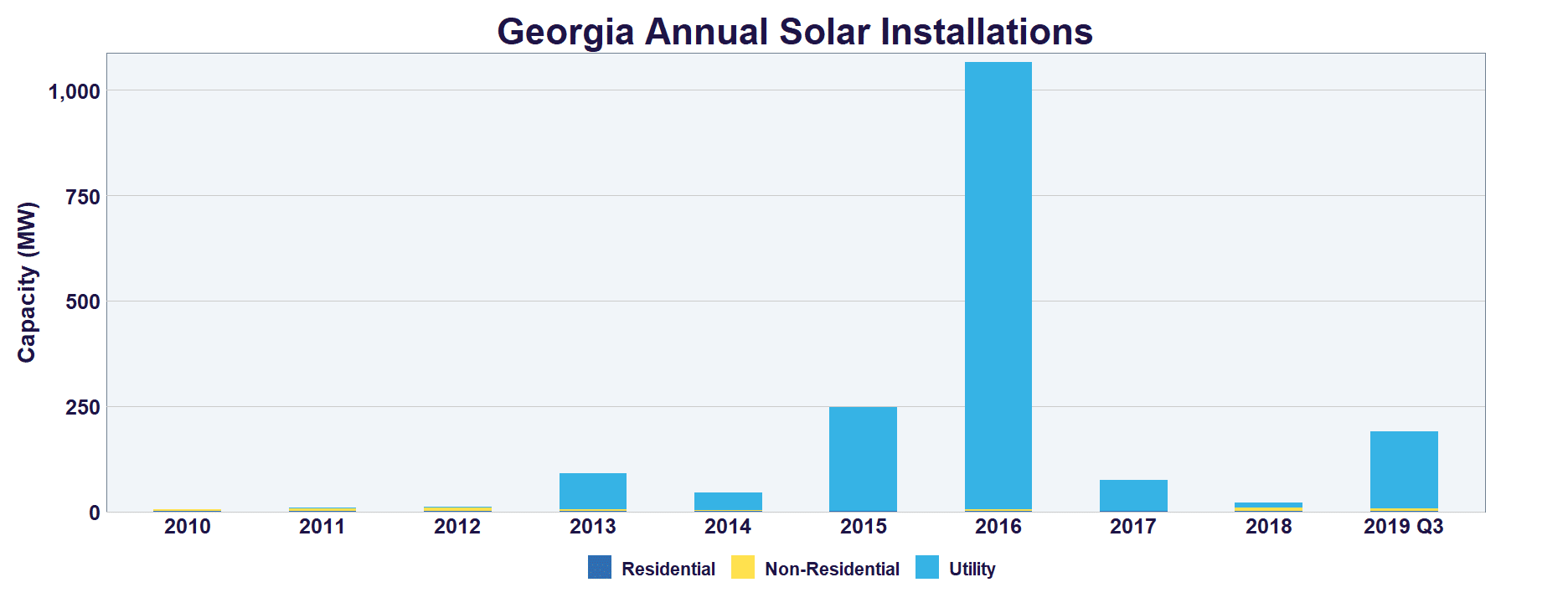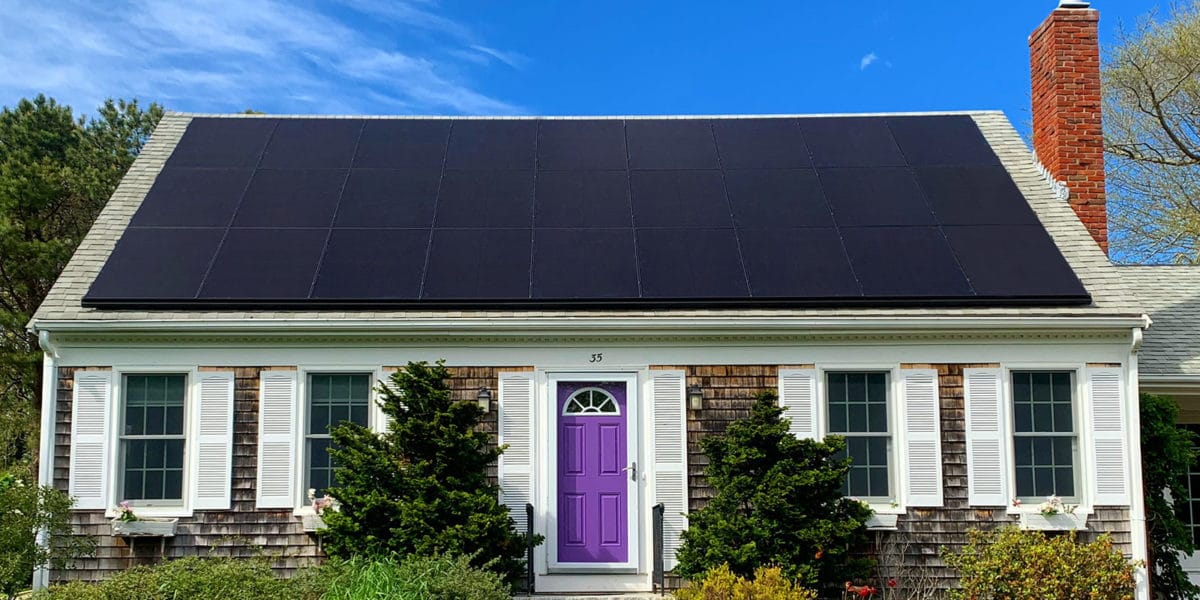The Georgia Public Service Commission (PSC) has voted to approve net metering for 5,000 solar installations, or 32 MW worth of residential solar power. The motion was submitted by Commissioner Timothy Echols as an add-on to a broader annual rate case ruling by the PSC. The key language of the motion reads:
The “Behind the Meter” netting period length shall be changed from instant to monthly for the first 5,000 rooftop solar ratepayers or until the installed capacity reaches 32 MW – whichever comes first. This will be re-evaluated in the next rate case.
The motion doesn’t note whether the 32 MW value is inverter sizing (AC) or solar module sizing (DC). pv magazine USA reached out to Echols for a comment.
Katie Chiles Ottenweller, southeast director at Vote Solar, was unhappy with the program’s cap at 5,000 installations, but happy to get something moving the program forward — since there are currently only about 1,000 residential solar power systems in Georgia Power territory.
SEIA puts Georgia at 10th overall nationally for solar installed with about 1.7 GW — generating 0.35% of the state’s electricity. This volume is almost entirely based upon utility solar installations as seen in the below chart.

The larger activity around this solar powered net metering motion, is a rate case that will increase bills by $1.77 billion over the next three years. To raise money, fixed and generation rates were increased.
The basic service charge stays at the current price of $10 per month in 2020, before increasing to $12 in 2021 and $14 in 2022. The overall bill, for a customer using 1,000 kWh/month will increase by $5.89, a mix of electricity rate increase and fixed fill increase.
The residential customer price per kilowatt hour will increase by 4-4.5% in 2020, 2 to 2.5% in 2021, and 4.5 to 5% in 2022. That totals to a 10.8% to 12.5% increase over the three years, averaging 3.6% to 4.2% a year.
Georgia Power’s basic rates are noted on its residential tariff website, with taxes and various fees added on suggesting an effective price per kilowatt hour somewhere near 11-12¢/kWh. If 32 MWac/42 MWdc of residential solar is installed, and it produces 59 GWh a year of electricity that is compensated at roughly 11-12¢/kWh, then the residential program will cost between $7.1 to $7.7 million a year. This value includes the 10.5% rate base (utility profit margin) that was also approved in the motion.
On a per customer basis, based on Georgia Powers 2.4 million accounts, that amounts to approximately $3 a year per person for the length of the net metering contract for these 5,000 installations.
Of course, you’d still have to subtract out the value of the solar electricity, which is a whole ‘nother article.
This content is protected by copyright and may not be reused. If you want to cooperate with us and would like to reuse some of our content, please contact: editors@pv-magazine.com.








Southern company/Ga. power agreed to net metering 12-19-2019 to receive a large rate increase a now I am told they do not like the net metering. I have a 10kw solar system for 8 years and on a sunny day send Ga power 40 to 65 KWH hours and in return credit my bill 3.2 cents per KWH while charging 12cents I am one of the 967 total home owner who have invested in solar.Georgia ranks # 10 in home solar in the us.Ga power has invested in solar thousand of acres but wants to prevent home owners it is not fair.
Looking at installing a 75kWh daily production system which is my estimated consumption. So are you saying you produce 50kWh daily to GA power at 3.2 cents per KW but they sell that same 50kW back to you at 12 cents per kW ? Or do they buy your power above what you consume at the 3.2 cents per kWh? Thanks